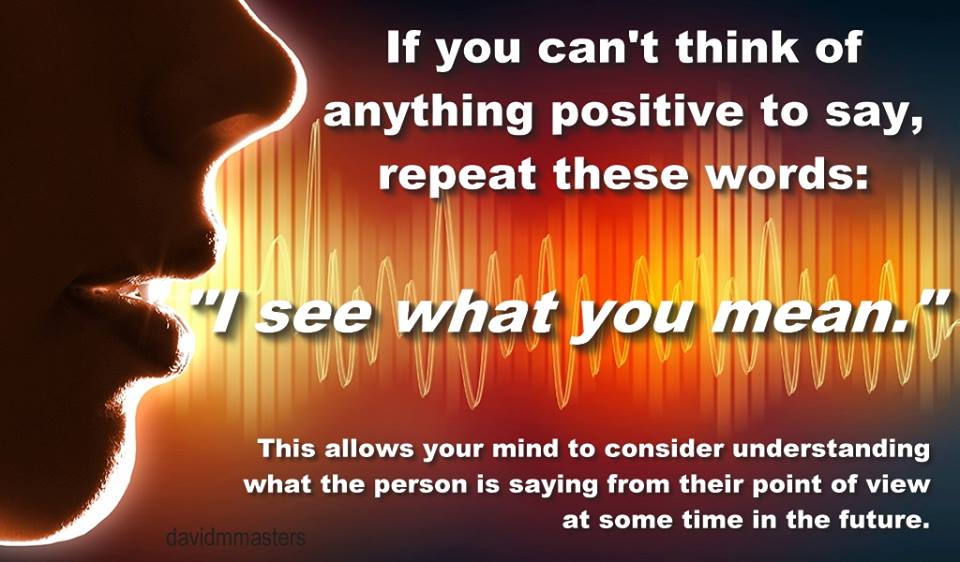Often the subject of debate, two people witness the same incident, a group of people share the same experience at the same time and place, scientists researching the same problems, political parties examine the same set of statistics, on and on it goes, and everyone comes to a different conclusion.
The financial backbone of our society, legal and otherwise, actually depends, is powered by, and thrives on people’s inability to agree.
Everything that we witness, see, experience is fed into ourselves via our observatory senses, the data collected by our nervous system is interpreted by our mind – which we know is a collection of data collected over a lifetime – and our brain tries to make sense of it all, arriving at a personal conclusion.
So, really, it’s no surprise that people see things differently, especially if Miss Interpretation is participating.
And that’s not even addressing the idea of spin. Spin is a tactic used to manipulate the perceptions of people about a specific event, idea, topic or occurrence. The spin technique is wielded by media, politicians, salespeople, educators, lawyers, parents and friends (not to mention those with less than honorable intentions) in an attempt to persuade the perception of others. In fact, just about everyone who would have a sense of pride or comfort knowing that someone agreed with them about something. In this sense, most of us are guilty of attempting to impose our personal spin or opinion on others, because hanging out with like-minded people gives us a sense of belonging.
Christopher Nicholas Sarantakos, better known by the stage name Criss Angel hangs out in Las Vegas (one of my favorite towns), freaking people out by demonstrating that things aren’t always what they seem better than anyone. Everything is explainable, once you know the secret. So, he can levitate – or appear to levitate – on an open street without the use of harnesses of wires. The question in my mind is, “Can anyone truly levitate.”
I know people, in spiritual circles, who believe it is possible. Could a normal person (someone besides Criss Angel) levitate on a public street? Here’s an untouched – not photo-shopped – photo:

What do you think? Is this guy actually levitating on a public street? Or is it someone standing next to a grease spot on the street?
How about the un-retouched photo of this two-headed dog?

Just as in the case of these pictures are not what they seem, perception influences everything we experience and oftentimes, we have a choice determining the conclusion.
Clearly, things are not always as they seem and this is the basis of many inspirational stories, like this story of two angles on a terrestrial stroll:
Two traveling angels stopped to spend the night in the home of a wealthy family. The family was rude and refused to let the angels stay in the mansion’s guest room. Instead the angels were given a space in the cold basement. As they made their bed on the hard floor, the older angel saw a hole in the wall and repaired it. When the younger angel asked why, the older angel replied …”Things aren’t always what they seem.”
The next night the pair came to rest at the house of a very poor, but very hospitable farmer and his wife. After sharing what little food they had the couple let the angels sleep in their bed where they could have a good night’s rest. When the sun came up the next morning the angels found the farmer and his wife in tears. Their only cow, whose milk had been their sole income, lay dead in the field. The younger angel was infuriated and asked the older angel “how could you have let this happen!? The first man had everything, yet you helped him,” she accused. “The second family had little but was willing to share everything, and you let their cow die.”
“Things aren’t always what they seem,” the older angel replied. “When we stayed in the basement of the mansion, I noticed there was gold stored in that hole in the wall. Since the owner was so obsessed with greed and unwilling to share his good fortune, I sealed the wall so he wouldn’t find it. Then last night as we slept in the farmers bed, the angel of death came for his wife. I gave her the cow instead. Things aren’t always what they seem.”
An inspirational story that depicts there could be more going on than what meets the eye.
Maybe the next time you quickly come to a conclusion about a certain person, place, thing, event or circumstance or someone tries to persuade you to think something, you might consider taking a moment to pause (breathe) and do some investigation on your own before drawing a premature conclusion.
Just some food for thought, as we all know – more often than not – things are not what they seem, at first.


